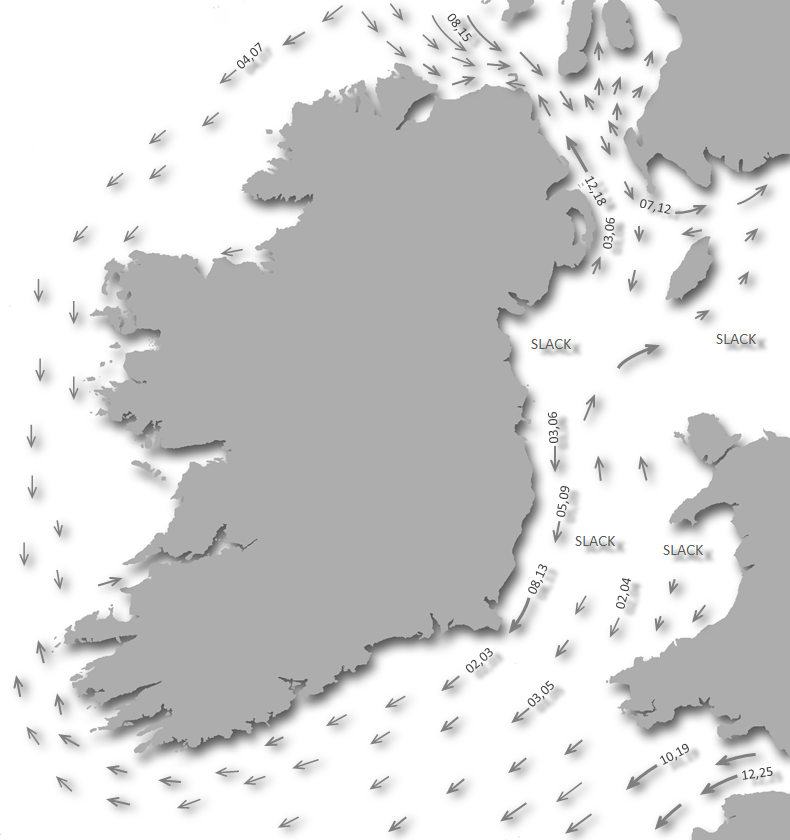_county_wexford_ireland_Cahore Stitches (18).jpg)
Cahore, or more correctly Polduff, is a small open harbour with a pier on Ireland's east coast and Wexford's northeastern coastline. It is predominantly an anchorage but medium draft vessels can come alongside temporarily at the end of the pier.
Cahore makes for a tolerable harbour in offshore conditions from the southwest round through west to northwest, but otherwise, it is entirely exposed. Access is straightforward as Cahore is free from any outlying obstacles and has no sandbanks between it and the Irish Sea.
Keyfacts for Cahore (Polduff)
Last modified
September 14th 2020 Summary
A tolerable location with straightforward access.Facilities



Nature



Considerations
Position and approaches
Expand to new tab or fullscreen
Haven position
 52° 34.183' N, 006° 11.983' W
52° 34.183' N, 006° 11.983' WAt the pier head.
What is the initial fix?
The following Cahore initial fix will set up a final approach:
 52° 34.198' N, 006° 11.618' W
52° 34.198' N, 006° 11.618' W What are the key points of the approach?
Offshore details are southbound vessels are available in eastern Ireland’s coastal overview for Dublin Bay to Rosslare Harbour  .
.
 .
. - Keeping to the marked channel and a ¼ of a mile offshore clears all dangers in the vicinity of Cahore.
- Keep 200 metres off the shoreline on the extremities of the bight of Poldugff Harbour on a final approach.
Not what you need?
Click the 'Next' and 'Previous' buttons to progress through neighbouring havens in a coastal 'clockwise' or 'anti-clockwise' sequence. Below are the ten nearest havens to Cahore (Polduff) for your convenience.
Ten nearest havens by straight line charted distance and bearing:
- Courtown Harbour - 4.5 nautical miles N
- Arklow - 13.6 nautical miles N
- Wexford Harbour - 16.7 nautical miles SW
- Rosslare Europort (Rosslare Harbour) - 19.7 nautical miles SSW
- Rosslare Bay (or South Bay) - 19.7 nautical miles SSW
- Ballytrent - 21.9 nautical miles SSW
- Carne - 22.8 nautical miles SSW
- Wicklow Harbour - 25.5 nautical miles NNE
- Kilmore Quay - 27.8 nautical miles SSW
- Little Saltee (landing beach) - 29.4 nautical miles SSW
These havens are ordered by straight line charted distance and bearing, and can be reordered by compass direction or coastal sequence:
- Courtown Harbour - 4.5 miles N
- Arklow - 13.6 miles N
- Wexford Harbour - 16.7 miles SW
- Rosslare Europort (Rosslare Harbour) - 19.7 miles SSW
- Rosslare Bay (or South Bay) - 19.7 miles SSW
- Ballytrent - 21.9 miles SSW
- Carne - 22.8 miles SSW
- Wicklow Harbour - 25.5 miles NNE
- Kilmore Quay - 27.8 miles SSW
- Little Saltee (landing beach) - 29.4 miles SSW
What's the story here?
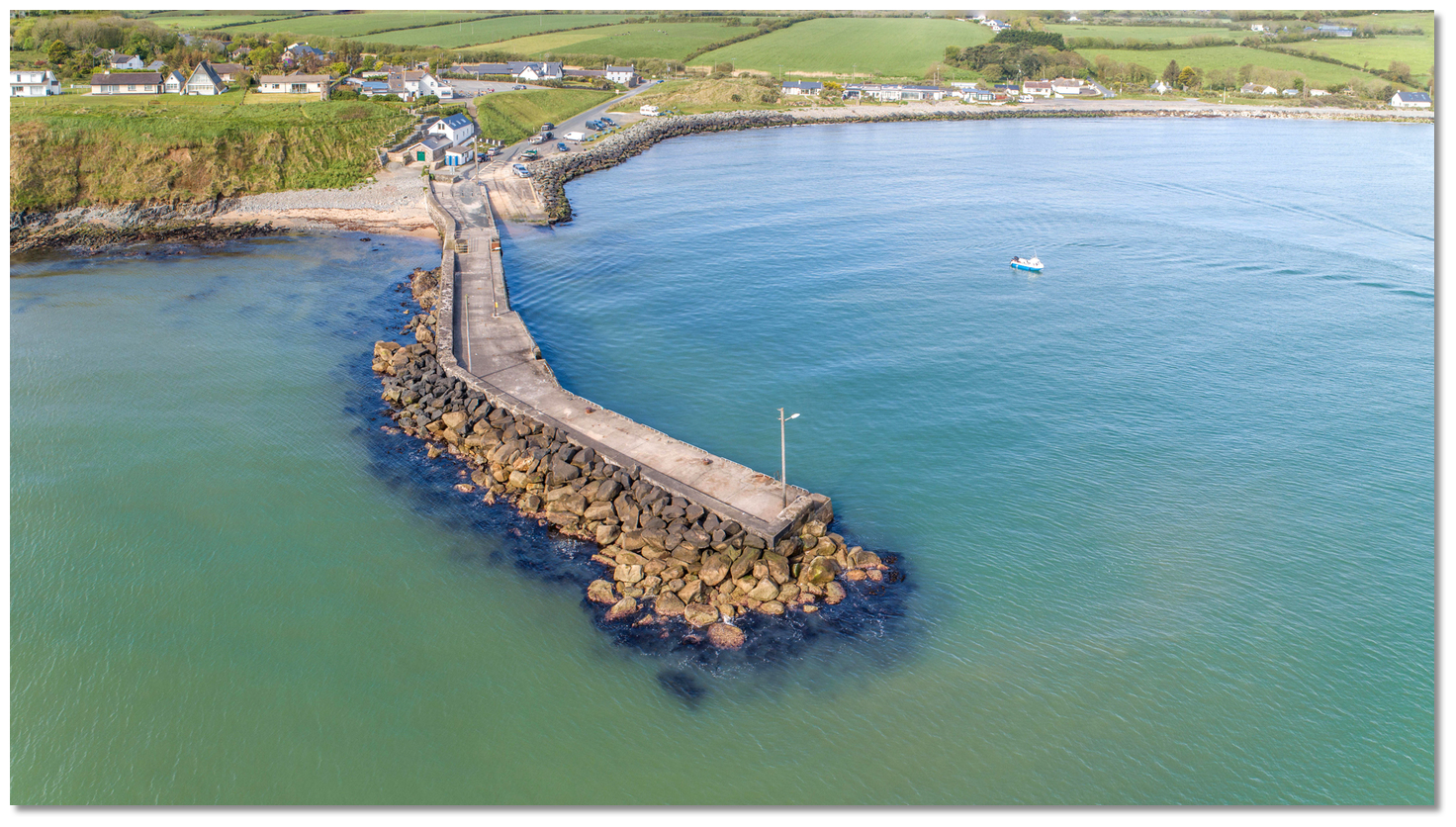 Polduff Pier
Polduff PierImage: Michael Harpur
Cahore is a small fishing village located about 5 miles south of Courtown Harbour and ½ a mile northwestward from Cahore Point. Its principal focus is Polduff Harbour that consists of a small open harbour protected by a pier that projects northeastward from the shore for a distance of 100 metres. The pier has no harbour master and is maintained primarily for the use of small leisure boats.
The coastal indent, in which the pier is inset, provides an anchorage northward of the head of the pier during offshore winds where 2 to 3 metres will be found. The outer 20 metres of the pier has about 1.4 metres LAT and moderate draft vessels may come alongside temporarily with sufficient rise of tide.
How to get in?
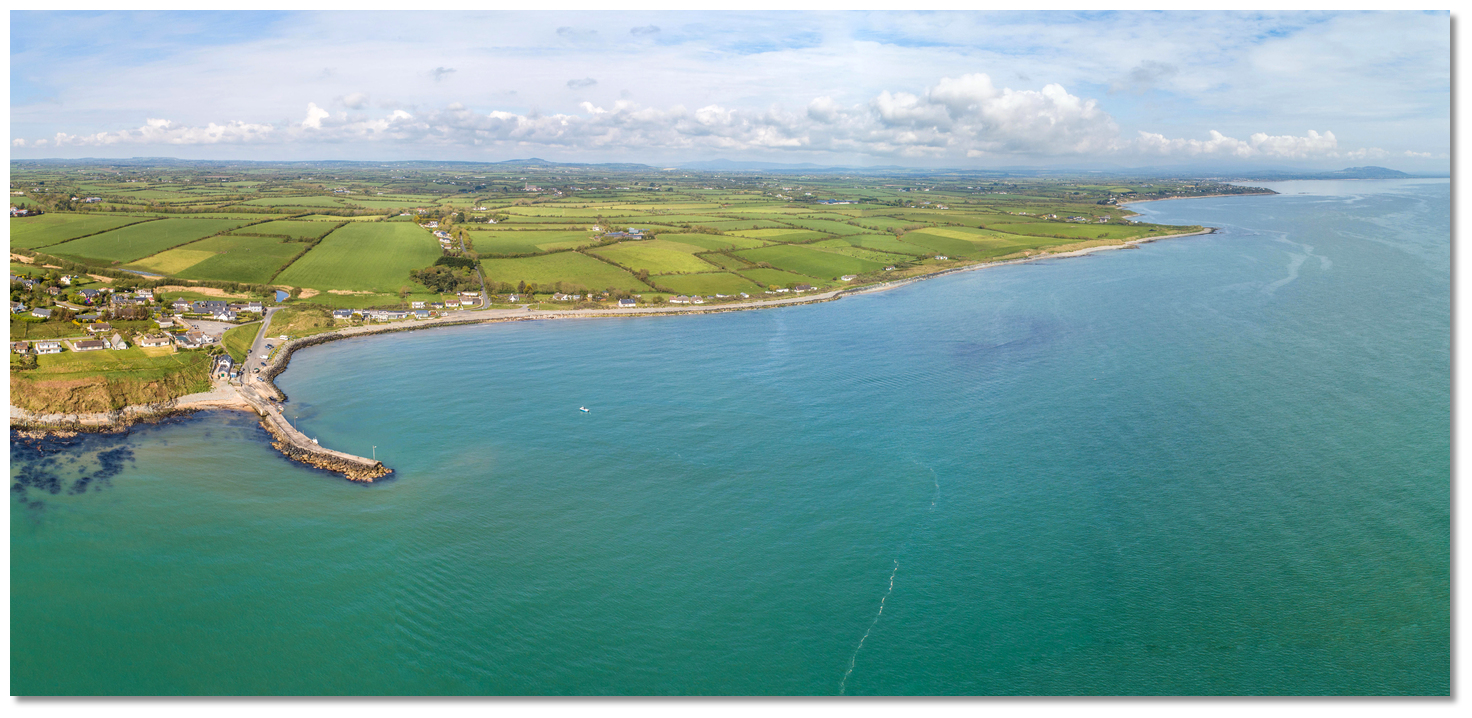 Polduff Pier and the coast northward
Polduff Pier and the coast northwardImage: Michael Harpur
 Use eastern Ireland’s coastal overview for Dublin Bay to Rosslare Harbour
Use eastern Ireland’s coastal overview for Dublin Bay to Rosslare Harbour  for seaward approaches.
for seaward approaches. From the initial fix come straight in towards Polduff pier situated about ½ a mile northwest of the point. A conspicuous white house at the back of the pier plus several houses above will be seen on an elevation of 19 metres. Ballygarret Roman Catholic Chapel, situated about 1½ miles northwest of the point, can be readily picked out from seaward.
From the initial fix come straight in towards Polduff pier situated about ½ a mile northwest of the point. A conspicuous white house at the back of the pier plus several houses above will be seen on an elevation of 19 metres. Ballygarret Roman Catholic Chapel, situated about 1½ miles northwest of the point, can be readily picked out from seaward. Keep at least a 200 metres off the shore between the pier and Cahore Point to avoid some fringing rocks that have 1 metre of cover. To the north of the harbour, there are no dangers apart from the inshore and locally known 'Nell’s Patch'. This is an uncharted and unmarked underwater outcrop approximately two hundred metres north of the pier head. It is located in a direct line between the pierhead and the visible Rooney Rock. Keeping the pierhead on a bearing of not less than 210° T clears this.

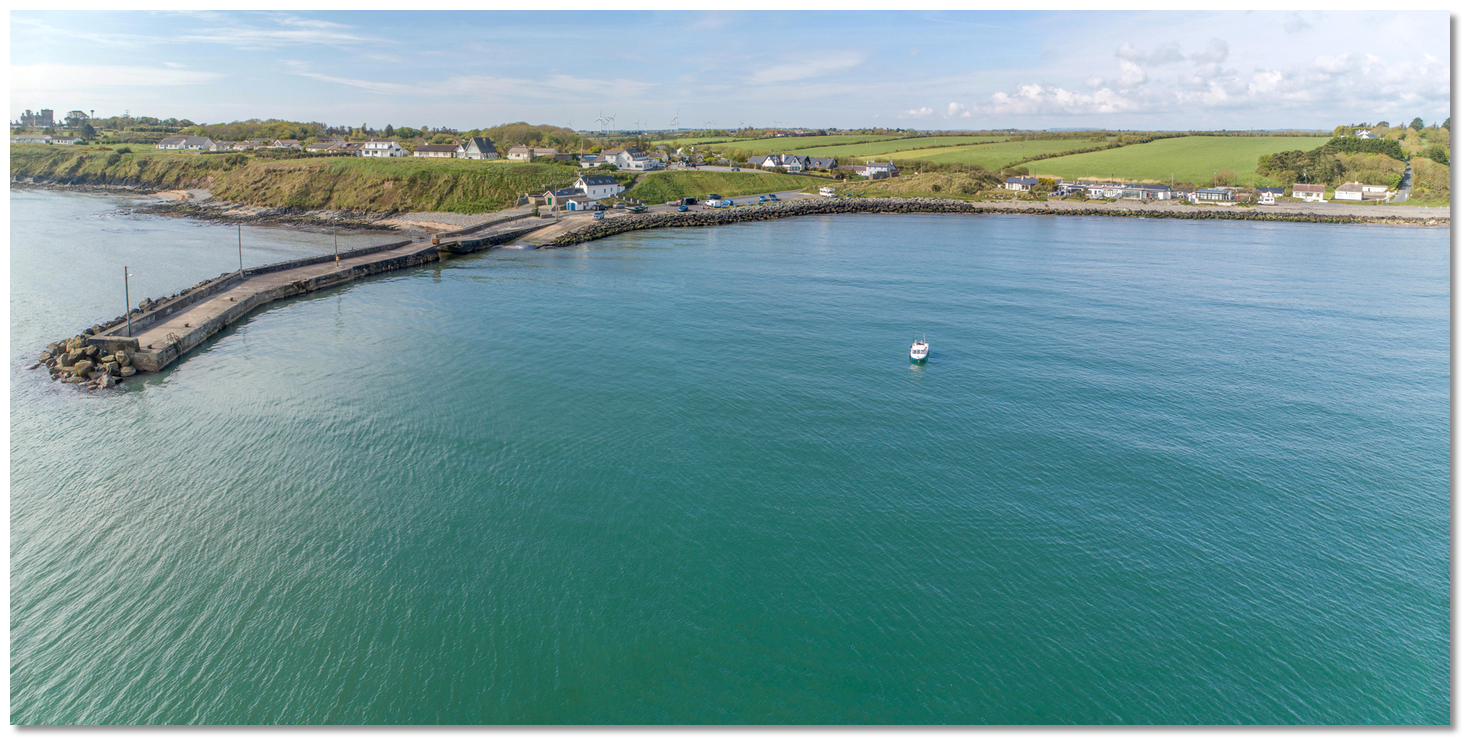 Anchor according to draft northwards of the pier
Anchor according to draft northwards of the pierImage: Michael Harpur
 The small open harbour is protected by a pier that projects 100 metres northeast from the shore. At night the pier has street lights but these cannot be relied on as navigation marks. Anchor in 2 to 3 metres to the north or northeast of the pierhead. This is just inside the channel markers and is a no-wash zone.
The small open harbour is protected by a pier that projects 100 metres northeast from the shore. At night the pier has street lights but these cannot be relied on as navigation marks. Anchor in 2 to 3 metres to the north or northeast of the pierhead. This is just inside the channel markers and is a no-wash zone. 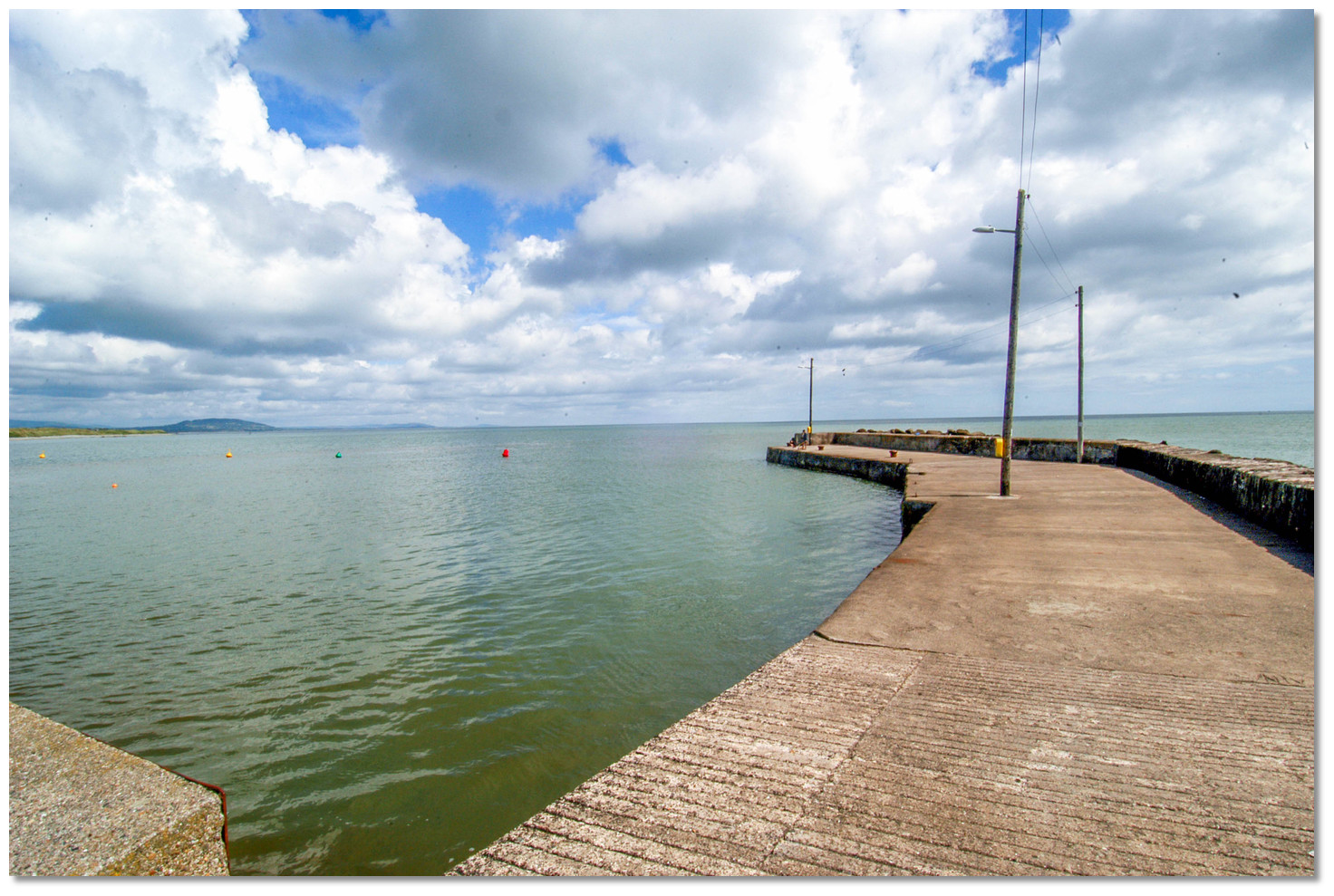 It may be possible to come alongside the outer end of the pier
It may be possible to come alongside the outer end of the pierImage: Michael Harpur
Shallow draft vessels or vessels that can take to the hard may come alongside the outer 20 metres of the pier. At the very end of the pier, it is possible to find at least 1 metre alongside. Land at the slip at the root of the pier.
Why visit here?
The name Cahore is certainly of Gaelic origin but its meaning is unclear, therefore its Irish name is based on the historical spellings and current pronunciation, 'Cath Óir'. The harbour name an Phoill Duibh, means 'the dubh, black, poll 'hole or pool', so the 'black hole or pool'. Old lifeboat above the pier
Old lifeboat above the pierImage: Michael Harpur
The central feature of the small village is its 19th-century pier with its old coastguard station alongside. The pier was initially built to unload Welsh coal and salt from schooners that would lay close offshore taking advantage of the natural shelter provided by Cahore Point.
 The bridge joining the original pier with its extension
The bridge joining the original pier with its extensionImage: Michael Harpur
Early in the 20th-century, the pier was extended with a small bridge that can be seen today joining the original pier to the then newly added section. The intention was to bring in larger fishing boats so that they could land their catch here. It is still a popular landing place for whelk-fishing boats but today the pier’s slipway is mostly kept busy by anglers launching a local fleet of small fishing boats. The fast-moving tidal waters around Cahore are teaming with fish, and herring, mackerel, tope, smoothhound, spurdog, ray, flounder, whiting, and dogfish that are all pulled in here at different times of the year. But a boat is not always required large Bass is a particular attraction for beach anglers. The pier also sees a lot of use from young children who come to it to fish for crabs in the summertime.
 The view ashore from Polduff Pier
The view ashore from Polduff PierImage: Michael Harpur
The areas major visitor attraction is what is locally called the 'South Beach' that is situated to the south of Cahore Point and a few minutes walk from the pier. More widely known as 'Morriscastle Beach' it is widely regarded as the best east coast beach in Ireland. It is also said to be the longest single stretch of beach in Europe running for an unbroken 20 km from Cahore Point to Curracloe’s Raven Point at the entrance to the estuary to Wexford Harbour. The beach was awarded Blue Flag status in 2008 and is considered a safe family beach with very fine sand and beautiful dunes. Lifeguards protect the beach during the summer months of June, July and August.
 'South Beach' that is more widely known as 'Morriscastle Beach'
'South Beach' that is more widely known as 'Morriscastle Beach'Image: Mark Sinnott Via CC BY-SA
The dunes have been listed as a Special Area of Conservation by the National Parks & Wildlife Service, which terms the area 'Cahore Dunes & Polders'. Some rising up to 60-feet high, with extensive areas of wetland, lagoonal drainage areas, and polder grasslands, support several very rare and protected plant species. Its fronting seas are also attractive to wildlife watchers who come to see the seals and porpoises in the waters.
 The Strand Bar overlooking the pier
The Strand Bar overlooking the pierImage: Michael Harpur
Reached by a long winding road that leads from Ballygarett village that ends at the shore above the pier, Cahore feels like a place where time has stood still. Though holiday homes ring the little bay and are dotted along the higher headland, there is usually very little activity to be seen and the massive beach can disperse event the largest of crowds should they come. Any life that will be experienced is at the Strand Bar which overlooks the pier and this is modest at the best of times. It truly is a nice peaceful, out of the way place to stop in.
 Dusk over Morriscastle beach
Dusk over Morriscastle beachImage: Mark Sinnott Via CC BY-SA
From a boating perspective, the harbour affords good shelter in offshore winds and is a particularly useful anchorage for yachts working their way south along the coast awaiting a fair tide. It is five minutes from the north entrance to the Rusk Channel and at high water Dover, this starts to run south at up to 3 Knots. As such it is an ideal location for a southward bound vessel to optimise the south-flowing tide and set up a 'single tide jump' to Kilmore Quay. Likewise, situated approximately eight nautical miles south of the Arklow Bank and just slightly north of the Blackwater Bank, it has clear and unobstructed Irish Sea access. This makes it a useful jump-off point for departure for the UK.
What facilities are available?
There is a slip alongside the pier for hauling out a dinghy, and The Strand Bar immediately above the harbour that occasionally provides sandwiches. There is no shop or other food outlet.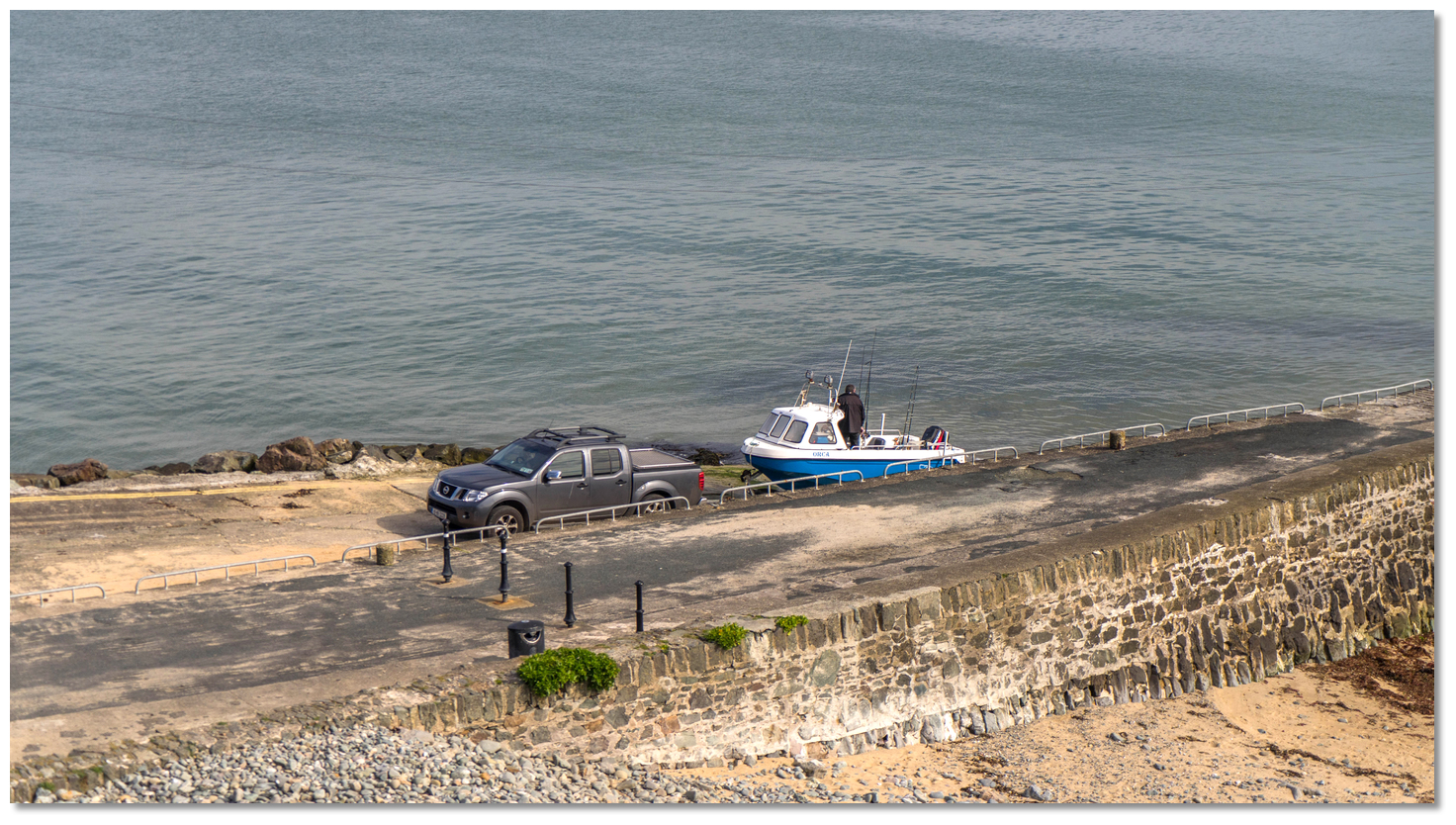 Vehicle launching a boat from the slip situated at the root of Polduff Pier
Vehicle launching a boat from the slip situated at the root of Polduff PierImage: Michael Harpur
Apart from this there is nothing else within walking distance. Ballygarrett is the nearest small village, approximately 45 minutes and 3.5km away, which has a mini supermarket and a petrol station.
Any security concerns?
Cahore is a very quiet out of the way place. However it attracts tourists in peak season. It makes sense in the busy time to pull off the pier and anchor off when turning in for the night. As the pier is low you are less than a metre from the edge, and if any youngsters come down after closing time you may be the unintended eavesdropper as they chat into the later hours at the end of the pier. For this reason it is best just to move out off the pier.With thanks to:
George Mahon, Courtown Harbour sailing Club._county_wexford_ireland_DSC_1151.JPG)
_county_wexford_ireland_DSC_1145.JPG)
_county_wexford_ireland_DSC_1156.JPG)
_county_wexford_ireland_Lesmundo via (CC BY_SA 3.0).jpg)
_county_wexford_ireland_DSC_1172_edited_1.jpg)
_county_wexford_ireland_DSC_1161.JPG)
_county_wexford_ireland_DSC_1163.JPG)
Aweial views of the pier
About Cahore (Polduff)
The name Cahore is certainly of Gaelic origin but its meaning is unclear, therefore its Irish name is based on the historical spellings and current pronunciation, 'Cath Óir'. The harbour name an Phoill Duibh, means 'the dubh, black, poll 'hole or pool', so the 'black hole or pool'.
 Old lifeboat above the pier
Old lifeboat above the pierImage: Michael Harpur
The central feature of the small village is its 19th-century pier with its old coastguard station alongside. The pier was initially built to unload Welsh coal and salt from schooners that would lay close offshore taking advantage of the natural shelter provided by Cahore Point.
 The bridge joining the original pier with its extension
The bridge joining the original pier with its extensionImage: Michael Harpur
Early in the 20th-century, the pier was extended with a small bridge that can be seen today joining the original pier to the then newly added section. The intention was to bring in larger fishing boats so that they could land their catch here. It is still a popular landing place for whelk-fishing boats but today the pier’s slipway is mostly kept busy by anglers launching a local fleet of small fishing boats. The fast-moving tidal waters around Cahore are teaming with fish, and herring, mackerel, tope, smoothhound, spurdog, ray, flounder, whiting, and dogfish that are all pulled in here at different times of the year. But a boat is not always required large Bass is a particular attraction for beach anglers. The pier also sees a lot of use from young children who come to it to fish for crabs in the summertime.
 The view ashore from Polduff Pier
The view ashore from Polduff PierImage: Michael Harpur
The areas major visitor attraction is what is locally called the 'South Beach' that is situated to the south of Cahore Point and a few minutes walk from the pier. More widely known as 'Morriscastle Beach' it is widely regarded as the best east coast beach in Ireland. It is also said to be the longest single stretch of beach in Europe running for an unbroken 20 km from Cahore Point to Curracloe’s Raven Point at the entrance to the estuary to Wexford Harbour. The beach was awarded Blue Flag status in 2008 and is considered a safe family beach with very fine sand and beautiful dunes. Lifeguards protect the beach during the summer months of June, July and August.
 'South Beach' that is more widely known as 'Morriscastle Beach'
'South Beach' that is more widely known as 'Morriscastle Beach'Image: Mark Sinnott Via CC BY-SA
The dunes have been listed as a Special Area of Conservation by the National Parks & Wildlife Service, which terms the area 'Cahore Dunes & Polders'. Some rising up to 60-feet high, with extensive areas of wetland, lagoonal drainage areas, and polder grasslands, support several very rare and protected plant species. Its fronting seas are also attractive to wildlife watchers who come to see the seals and porpoises in the waters.
 The Strand Bar overlooking the pier
The Strand Bar overlooking the pierImage: Michael Harpur
Reached by a long winding road that leads from Ballygarett village that ends at the shore above the pier, Cahore feels like a place where time has stood still. Though holiday homes ring the little bay and are dotted along the higher headland, there is usually very little activity to be seen and the massive beach can disperse event the largest of crowds should they come. Any life that will be experienced is at the Strand Bar which overlooks the pier and this is modest at the best of times. It truly is a nice peaceful, out of the way place to stop in.
 Dusk over Morriscastle beach
Dusk over Morriscastle beachImage: Mark Sinnott Via CC BY-SA
From a boating perspective, the harbour affords good shelter in offshore winds and is a particularly useful anchorage for yachts working their way south along the coast awaiting a fair tide. It is five minutes from the north entrance to the Rusk Channel and at high water Dover, this starts to run south at up to 3 Knots. As such it is an ideal location for a southward bound vessel to optimise the south-flowing tide and set up a 'single tide jump' to Kilmore Quay. Likewise, situated approximately eight nautical miles south of the Arklow Bank and just slightly north of the Blackwater Bank, it has clear and unobstructed Irish Sea access. This makes it a useful jump-off point for departure for the UK.
Other options in this area
Click the 'Next' and 'Previous' buttons to progress through neighbouring havens in a coastal 'clockwise' or 'anti-clockwise' sequence. Alternatively here are the ten nearest havens available in picture view:
Coastal clockwise:
Wexford Harbour - 10.4 miles SWRosslare Bay (or South Bay) - 12.2 miles SSW
Rosslare Europort (Rosslare Harbour) - 12.2 miles SSW
Ballytrent - 13.6 miles SSW
Carne - 14.1 miles SSW
Coastal anti-clockwise:
Courtown Harbour - 2.8 miles NArklow - 8.4 miles N
Wicklow Harbour - 15.8 miles NNE
Greystones - 21.9 miles N
Bray Harbour - 23.9 miles N
Navigational pictures
These additional images feature in the 'How to get in' section of our detailed view for Cahore (Polduff).











| Detail view | Off |
| Picture view | On |
Aweial views of the pier
Add your review or comment:
Please log in to leave a review of this haven.
Please note eOceanic makes no guarantee of the validity of this information, we have not visited this haven and do not have first-hand experience to qualify the data. Although the contributors are vetted by peer review as practised authorities, they are in no way, whatsoever, responsible for the accuracy of their contributions. It is essential that you thoroughly check the accuracy and suitability for your vessel of any waypoints offered in any context plus the precision of your GPS. Any data provided on this page is entirely used at your own risk and you must read our legal page if you view data on this site. Free to use sea charts courtesy of Navionics.








